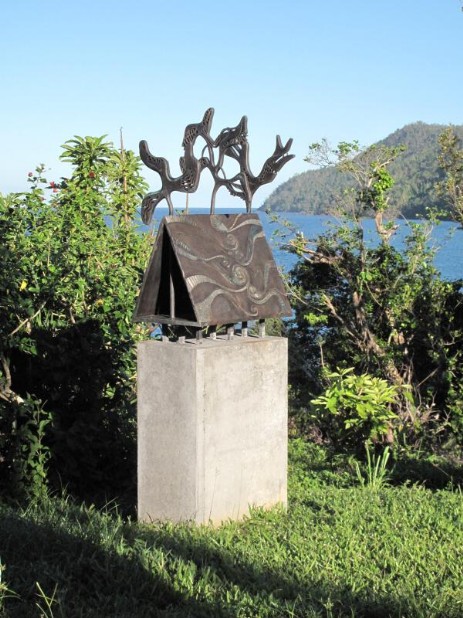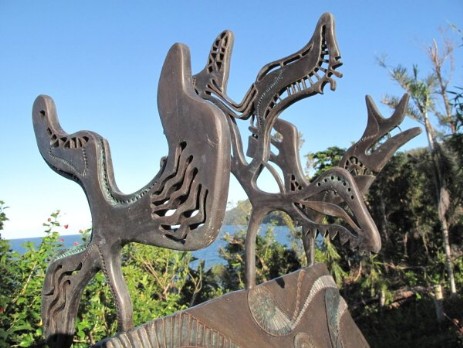The Spirit House sculpture
The ‘Spirit House’ was sculpted by the renowned local artist, Ben Trupperbaumer.


The concept behind this sculpture was to produce an aesthetic and enduring symbolic connection between the place and fond memories of family members.
Ben triumphed in capturing this concept and transforming it from a idea into a beautiful, painstakingly carved Mackay Acacia ‘Cedar’ timber sculpture. This was not the end of the journey, however, as the sculpture was to face the outdoor tropical climate and whatever mother nature might throw at it.
Some notes on how the sculpture was produced:-
At the Chalkos Art Foundry in Brisbane, moulds were made of the individual carved pieces and the lost wax process was used to cast the replicated parts in bronze. Lost wax casting is an ancient and highly skilled craft in itself although modern materials assist to some extent.
First a rubber template was cast from the original and then a wax replica of the original was made using the rubber mould.
The wax version was then coated with a fibreglass reinforced foundry plaster cast which provided ‘spruces’ (pipes) for metal flow and air escape. The mold was then fired in a kiln to 800 degrees C and the wax vapourized, leaving the empty mould.
On the 10th of June 2008, the casting metal, which is mostly copper and approx. 4% silicon with traces or other elements, was melted in a cruicible within a compact furnace and poured into the hot moulds. 48 Kg of metal was used for the spirit house parts not including the roof panels. The process is very time and temperature critical as the metal firms within minutes of removal from the furnace (see the upside down red hot mould picture)
After cooling, the mould was broken and removed to expost the cast items.
A bronze shrinks when it cools by approx. 5%.
Minor defects were repaired by brazing, and fortunately no casting failures occurred.
After assembly the surfaces were polished and patinated.
Once the component parts were brazed/fused together into a 90+ kilogram unit, the sculpture was transported to site and set into a concrete plinth. The plinth itself was an exercise given the remote location and the need to do build it by hand. Getting the sight lines and other factors just right for a good position took the best part of a day and a couple of glasses of wine.
The sculpture required four men to lift into position and a temporary timber framework to rigidly hold it there while the concrete set.
The result of this long and complex process is something quite special.
Sculpture Artist: Ben Trupperbaumer
The Australian & Oceanic ART GALLERY synopsis on Ben :-
“Ben Trupperbaumer was born in West Germany and moved to Australia in 1976. He is one of the leading sculptors in the Cairns/Port Douglas area.
Ben expresses a great awareness in his work of the tropical environment. His sculptures explore contemporary ecological issues, in particular the tension between fragility and strength, symmetry and disorder, balance and chaos.
He uses recycled timber to make statements about the influence of man on the Australian landscape. Bronze and timber are used separately or in combination for those which seek to tell of the essence of nature on a more domestic scale.”
The New York Times
ART REVIEW; Working With the Grain: A Once-Lowly Craft Now Glows With Ambition
Published: February 06, 1998
(Page 2 of 3)
“Far more elegant, and traditional, is Ben Trupperbaumer’s ”Carved Platter” (1992), a turned and carved piece of albizia tonna whose subtle grain and satiny surface is punctuated by lipped, free-form holes and a carved, Art-Nouveauish whiplash line that snakes from the rim of the plate into its middle. Although — or maybe because — it looks to the past, it is one of the show’s most beautiful objects.”